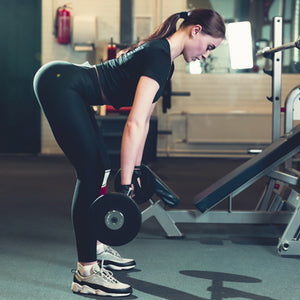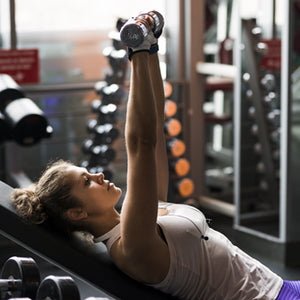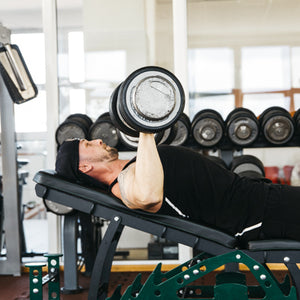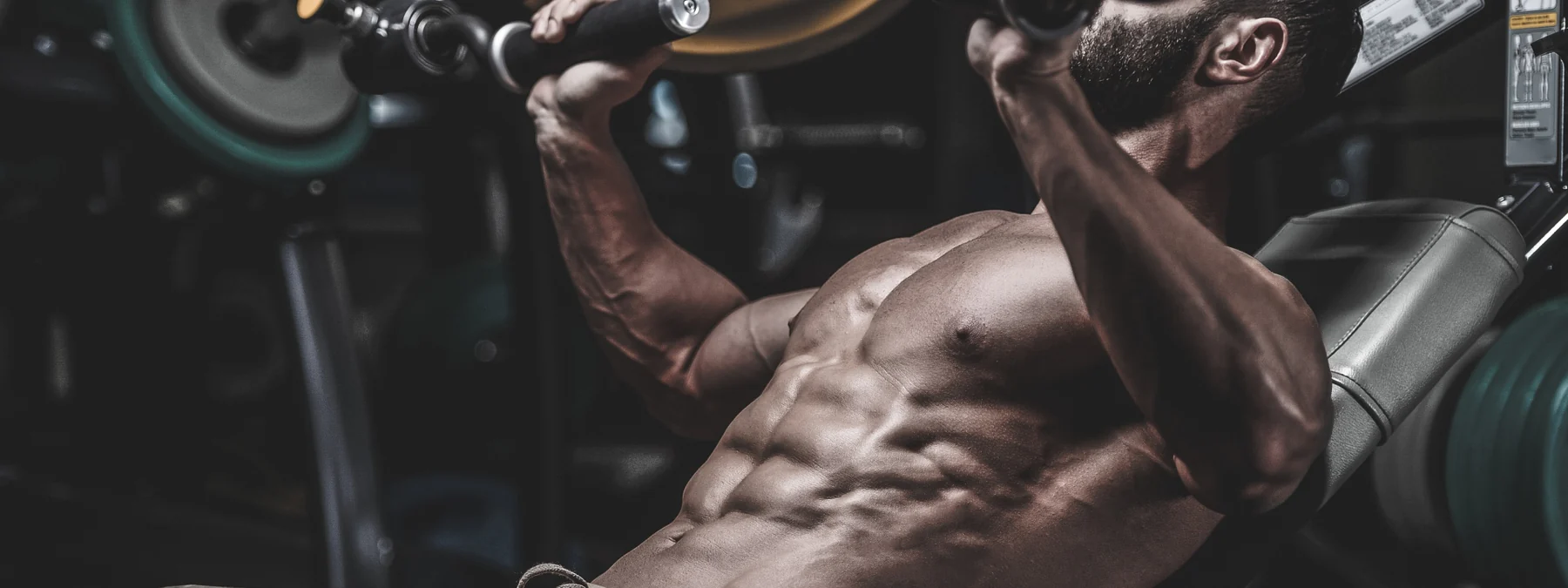
Attack! How to Improve Weak Body Parts & Lifts
The same principle can be applied to any body part. To increase size in the mirror and strength on the bar we make changes to training.
Over the last few years, with the rise in popularity of Layne Norton?s PHAT, many have found that training a body part 2 times per week seemed optimal. It helped to increase gains while stimulating muscles more often. Some even ventured into 3-4 times per week training (Smolov, Sheiko) on special powerlifting programs to take their training to another level and really bring up their chest (Sheiko with benching 3x a week and Smolov squatting 4x a week).
Related: 4 Great Chest Workouts for Improved Mass and Strength
The major thing holding back most trainees is their focus on isolation exercises. Compound exercises are actually the most effective means of stimulating the most muscles. Those who focus on leg extensions, lunges, leg curls, and some calves while avoiding squatting or stiff leg deadlifting for legs will wonder why they walk around with chicken legs.
Man up and put the bar on your back. Squat and focus on adding weight each week to put size on those quads/hamstrings.
With training experience, progress will slow. So instead of abandoning the exercise, utilize different variations to address the weakness. For example, add 2-3 second negatives, 2-3 second holds, forced negatives, extra hard contraction at the top of the motion, rest pause sets, myo-reps, and other intensity techniques. This will help on lighter loads while overloading the muscle for growth.
For those who find they stall on squats, try using a safety bar or front squats for accessory movements. Focus on a slower tempo, paused reps, or slow negatives. This will set hamstrings on fire. Do this over a 4-8 week block and then go back to regular squats. Check your progress after swapping out squats with these different movements and techniques.
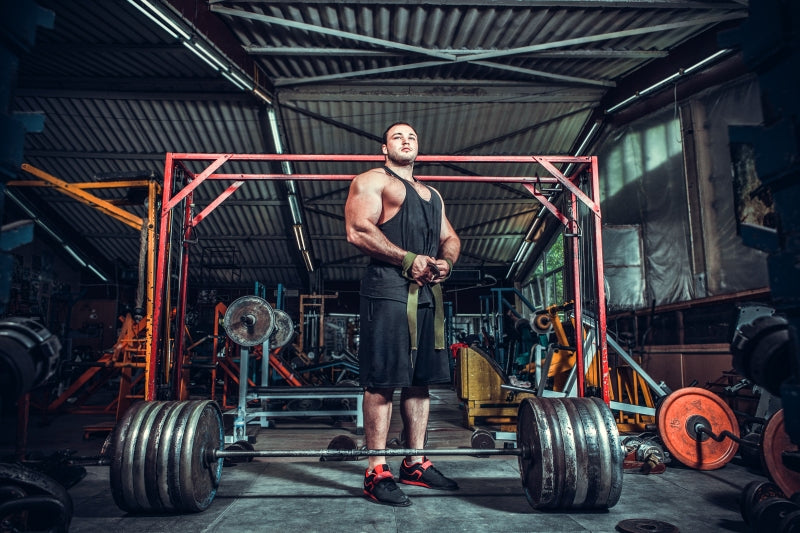
When it comes to deadlifts, it's usually those with longer arms and torso?s who are the best pullers.
Targeting Sticking Points on Squats and Deadlifts
Now let's address exercises that target body parts that tend to be stubborn, such as deadlifts and other major compound lifts that hit many muscle groups. Since I already gave a brief introduction on legs and squats, let's move on to the deadlift. Then we will work our way from bigger things to isolations and smaller body parts that will help us break sticking points on our compound lifts.As I noted with squats, you will have to determine what alternatives exercises are available that can help bring this movement up. If you have good stability when you squat, and have great hip strength, you may be able to thrive off box squats.
However, if you have better knee strength (which some do not) then you may enjoy high bar or front squats. Be sure you are spreading the floor when you squat (pushing your knees out as you descend) and keeping your chest firm and back tight to get deeper and make better use of your hips while staying on your heels.
When it comes to deadlifts, it's usually those with longer arms and torso?s who are the best pullers. Normally these individuals thrive off conventional deadlifts. Shorter lifters can utilize trap bar deadlifts or sumo deadlifts to their advantage by sitting back with a wider stance and shooting through the motion.
If you struggle with getting your hips to stay down through the motion (they are the first movement in the deadlift) it shows you have weak glutes. Holding them down and driving through the motion is how deficit deadlifts as an accessory can help trigger that weak point and increase your deadlift off the floor.
 If you have trouble locking out the motion and lack lower back strength, rack pulls will benefit you greatly by placing the focus on the lockout. I would also suggest utilizing rack pulls on an upper body power day and stiff leg deadlifts (which breaks the deadlift into two days and two movements) spread out to help focus on these and bring up the sticking point for the time being.
If you have trouble locking out the motion and lack lower back strength, rack pulls will benefit you greatly by placing the focus on the lockout. I would also suggest utilizing rack pulls on an upper body power day and stiff leg deadlifts (which breaks the deadlift into two days and two movements) spread out to help focus on these and bring up the sticking point for the time being.Go back to regular deadlifts after 8 weeks and take time off to see if there was improvement. I can almost guarantee you will see results.
If you did not see success, I offer two alternatives to help bring up those hips. Have you ever looked into barbell hip thrusts or glute bridges? Yes, these may look very funny as you are virtually humping the bar, but you are also engaging your glutes/hamstrings to the maximum.
This will really strengthen your hips. You will soon find yourself ripping the bar off the ground.
The focus should be on using the glutes instead of the hips to extend the load or using the erector to tilt your pelvis through the motion. Focus on the drive of your heels and hamstrings to power through the motion and get better force and mind muscle connection on the movement.
Remember, just as when you squat, have a stomach full of air and push out on your abs to help keep a stable torso throughout the movement. Improving the glute thrusting power and pelvic tilt will aid in your hamstring and glute strength, so make sure you put forth the effort to do the movement correctly.
Sometimes lifters can have torso imbalances. For example, one leg may be stronger than the other. In this case, use single leg exercises for your quads and hamstrings. Quad-wise we could look into pistol squats or one leg extensions or leg press. All three of these movements will isolate the specific quad and strengthen the weaker side.
If you do not enjoy any of these you could look into single leg Bulgarian squats where you place one foot on a bench and do individual lunges to help bring up the quad. Regarding hamstrings, we could look into single leg curls, or single leg stiff leg deadlifts with dumbbells. These are a great way to bring up the muscle on one leg while keeping the dominant leg exactly where it is. This will help settle the overall problem of one leg being stronger than the other.
Beefing Upper Body Weaknesses
let's start looking toward our upper body now that we have worked on our quads/hamstrings. Since we touched on rack pulls and stiff leg deadlifts for the overlap on the lower back, it may be worth your time to buy a small set of bands or utilize heavy weighted back extensions. This will thicken the lower back and bring up a lagging deadlift.There are always several benefits in attacking a weakness. Not only can this help to build up your lower back, but there is also some overlap to your core. This is huge because many of your compound movements, and even chin-ups/pull-ups, rely on core strength. The core is certainly activated during squat, bench, and deadlift, but there should still be some use of ab rollouts, planks, as well as proper weighted V-ups and crunches.

The last thing I want to touch on as we wrap up is our chest and shoulders. let's look at isolation exercises to bring up lagging parts.
Utilizing dumbbell?s can be a great alternative for stimulating single arm or single leg movements and shoulder movements. The change from a barbell will help get through sticking points and also control the movement better (some people thrive off dumbbells over barbells).
Another key is using different grips. This will allow for different a different feel and mind muscle connection. Think about an inverted grip on a dumbbell, or a neutral grip on a dumbbell (for any pressing or triceps movement). These are great alternatives to really focus on blasting the muscle and utilizing intensity techniques that will bring up the weakness you are trying to expose. Along with holds, negatives and forced reps, these different placements can help stimulate the muscle to a different degree depending on the individual and what may suit them.
In conclusion, there is a solution for every weakness. don't dwell on negatives such as, ?I am not a good squatter, deadlifter, or bencher.? Instead, focus on the things you can do to bring it up.
Think about the ways you can attack that weakness and expose it by bringing it up. There is always a positive from a negative, so dig deep, try some different exercises I have outlined above and monitor the results over time.

